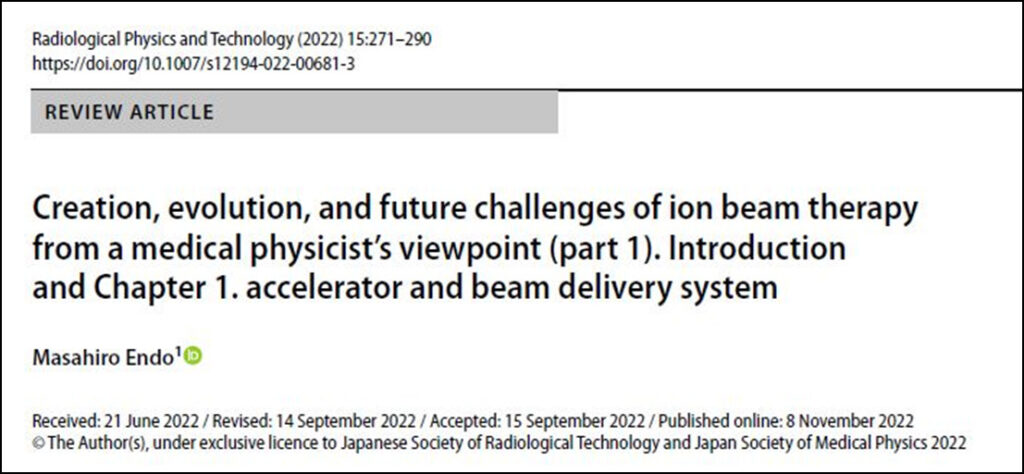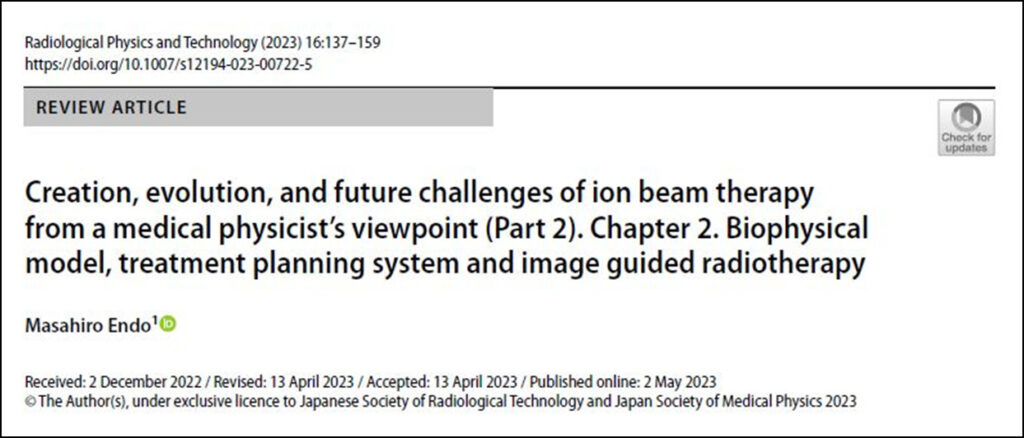Sourced by Dr. Leyla Madagossi, Editor (Educational), AFOMP Pulse
Creation, evolution and future challenges of ion beam therapy from a medical physicist’s view point (Part 1 & 2)
Ion beam therapy, also known as particle therapy, is a specialised form of radiation therapy used to treat certain types of cancer. It involves using high-energy ions, such as protons or heavier ions like carbon, to precisely target and destroy cancerous cells while minimising damage to surrounding healthy tissue. This precision arises from the unique physical properties of ions, known as the Bragg peak, which allows them to deposit most of their energy at a specific depth within the body. This is particularly useful for treating tumours near critical structures or in paediatric patients. The basic concept of ion beam therapy emerged in the mid-20th century, but it wasn’t until technological advancements in particle accelerators and imaging techniques that it became a practical and clinically useful treatment option.
Prof. Masahiro Endo from the Association for Nuclear Technology in Medicine, Japan, has shared invaluable insights into the creation, evolution, and future challenges of ion beam therapy in a two-part publication in Radiological Physics and Technology.
Part 1: Accelerator & Beam Delivery system

Take the journey from the conceptualisation of the use of Bragg Peak for cancer treatment in 1946 to the inception of particle therapy using Cyclotrons, the establishment of High LETRadiation Therapy in the US-Japan Cooperative Cancer Research in the ’70s, the transition to synchrotron-generated beams and compact synchrotrons to the current status of developments. A very impressive evolution has been the development of respiratory-gated methods as early as 1996 in the HIMAC facility in Japan.
Ion beam therapy has come a long way since its inception and holds significant promise for improving cancer treatment outcomes. Continued research, technological advancements, and efforts to make it more accessible will play a crucial role in shaping its future in radiation oncology.
Part 2: Biophysical model, TPS and IGRT

This paper builds on the previous part and dives into how the physical dose is translated to a radiobiological endpoint in the realm of ion beam therapy. Biological damage depends on the method of dose deposition and the density of ionisation tracks and that is where the potential of ion beam therapy manifests. Dose deposition is fundamentally different for high LET particles; the damage increases as the particles slow down. A physical dose distribution results in a different biological dose distribution and therefore, biophysical models are integral components of ion beam planning. Please read on the birth of ion beam treatment planning systems and biophysical models in the National Institute of Radiological Sciences (NIRS) and Gesell shaft fur Schwerionenforschung (Society for Heavy Ion Research) and its evolution to the Local Effect Model (LEM) and the modified Microdosimetric Kinetic Model (MKM) which are currently used.
